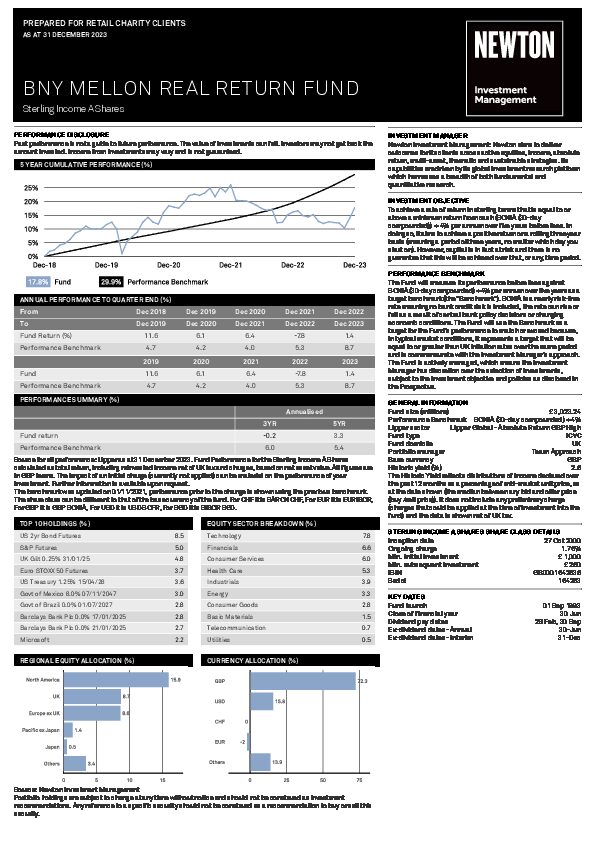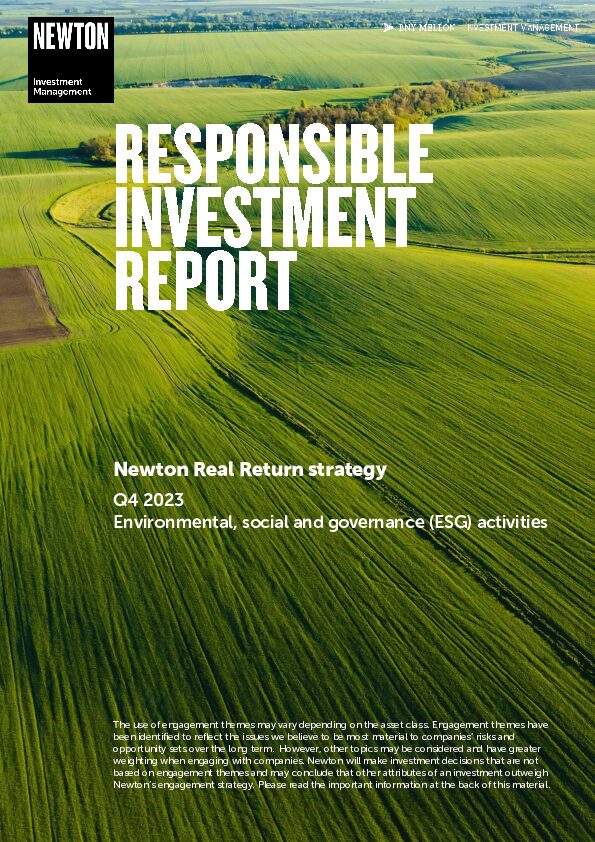Strategy profile
-
Objective
-
The strategy aims to achieve a rate of return in sterling terms that is equal to or above a minimum return from cash (SONIA (30-day compounded)) +4% per annum over five years before fees. In doing so, it aims to achieve a positive return on a rolling three-year basis (meaning a period of three years, no matter which day you start on). However, capital is in fact at risk and there is no guarantee that this will be achieved over that, or any, time period.
-
Performance benchmark
-
SONIA (30-day compounded) +4%*
-
Volatility
- Expected to be between that of bonds and equities over the long term
-
Typical assets
-
Selective exposure to
- Equities
- Corporate bonds
- Government bonds
- Cash derivatives
- Real estate
-
- Commodities
- Currencies
- Infrastructure
- Renewable energy
- Other ‘alternative’ strategies
-
Literature
-
View Key Investor Information Document
View prospectus -
- * Please note that on 1 October 2021, the performance benchmark for this strategy changed from 1-month GBP LIBOR +4% to SONIA (30-day compounded) +4%.
Investment team
-
-
Our Real Return strategy is managed by an experienced team with a wide range of backgrounds. In-house research analysts are at the core of our investment process, and our multidimensional research platform spans fundamental, thematic, ESG, quantitative, geopolitical, investigative and private-market research to promote better-informed investment decisions.
Want to find out more?
Your capital may be at risk. The value of investments and the income from them can fall as well as rise and investors may not get back the original amount invested.
ESG can be one of many inputs into the fundamental analysis. Newton will make investment decisions that are not based solely on ESG analysis. Other attributes of an investment may outweigh ESG analysis when making investment decisions. The way that material ESG analysis is assessed may vary depending on the asset class and strategy involved. As of September 2022, the equity investment team performs ESG analysis on equity securities prior to their recommendation. ESG analysis is not performed for all fixed-income securities. The portfolio managers may purchase equity securities that are not formally recommended and for which ESG analysis has not been performed.














